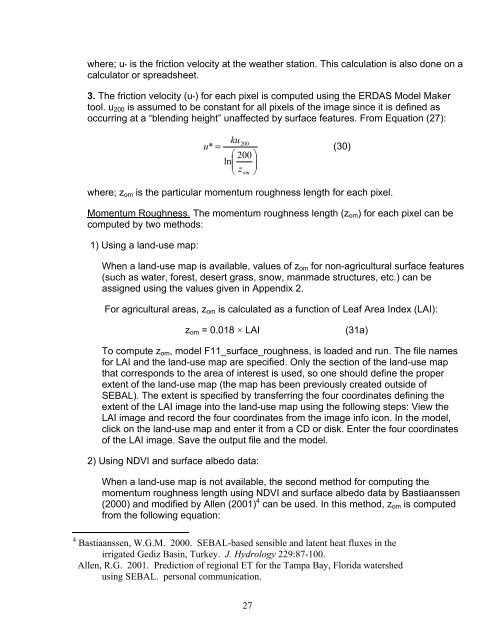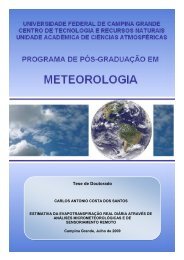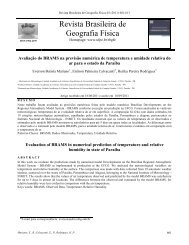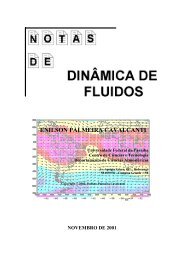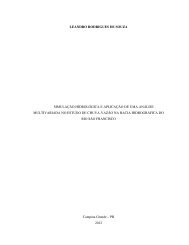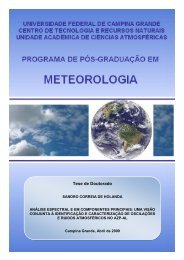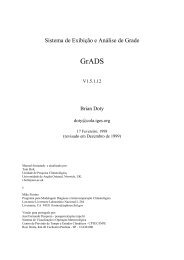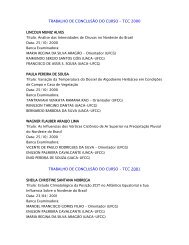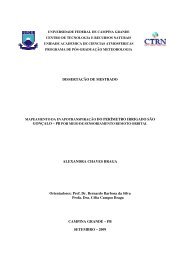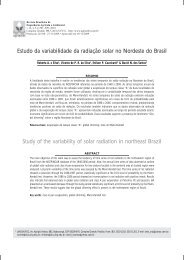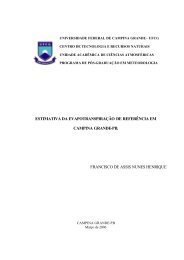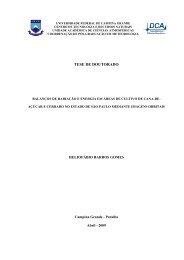You also want an ePaper? Increase the reach of your titles
YUMPU automatically turns print PDFs into web optimized ePapers that Google loves.
where; u * is the friction velocity at the weather station. This calculation is also done on acalculator or spreadsheet.3. The friction velocity (u * ) for each pixel is computed using the ERDAS Model Makertool. u 200 is assumed to be constant for all pixels of the image since it is defined asoccurring at a “blending height” unaffected by surface features. From Equation (27):ku200u*=⎛ 200 ⎞ln⎜⎟⎝ z om ⎠(30)where; z om is the particular momentum roughness length for each pixel.Momentum Roughness. The momentum roughness length (z om ) for each pixel can becomputed by two methods:1) Using a land-use map:When a land-use map is available, values of z om for non-agricultural surface features(such as water, forest, desert grass, snow, manmade structures, etc.) can beassigned using the values given in Appendix 2.For agricultural areas, z om is calculated as a function of Leaf Area Index (LAI):z om = 0.018 × LAI(31a)To compute z om , model F11_surface_roughness, is loaded and run. The file namesfor LAI and the land-use map are specified. Only the section of the land-use mapthat corresponds to the area of interest is used, so one should define the properextent of the land-use map (the map has been previously created outside of<strong>SEBAL</strong>). The extent is specified by transferring the four coordinates defining theextent of the LAI image into the land-use map using the following steps: View theLAI image and record the four coordinates from the image info icon. In the model,click on the land-use map and enter it from a CD or disk. Enter the four coordinatesof the LAI image. Save the output file and the model.2) Using NDVI and surface albedo data:When a land-use map is not available, the second method for computing themomentum roughness length using NDVI and surface albedo data by Bastiaanssen(2000) and modified by Allen (2001) 4 can be used. In this method, z om is computedfrom the following equation:4 Bastiaanssen, W.G.M. 2000. <strong>SEBAL</strong>-based sensible and latent heat fluxes in theirrigated Gediz Basin, Turkey. J. Hydrology 229:87-100.Allen, R.G. 2001. Prediction of regional ET for the Tampa Bay, Florida watersh<strong>edu</strong>sing <strong>SEBAL</strong>. personal communication.27


